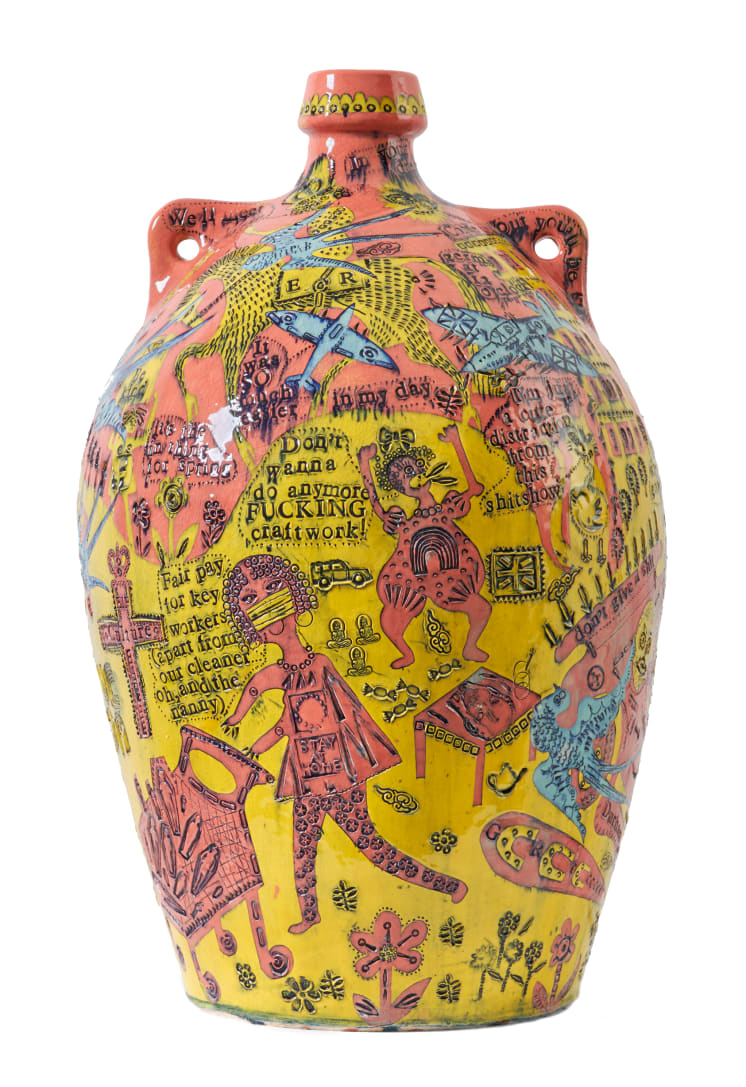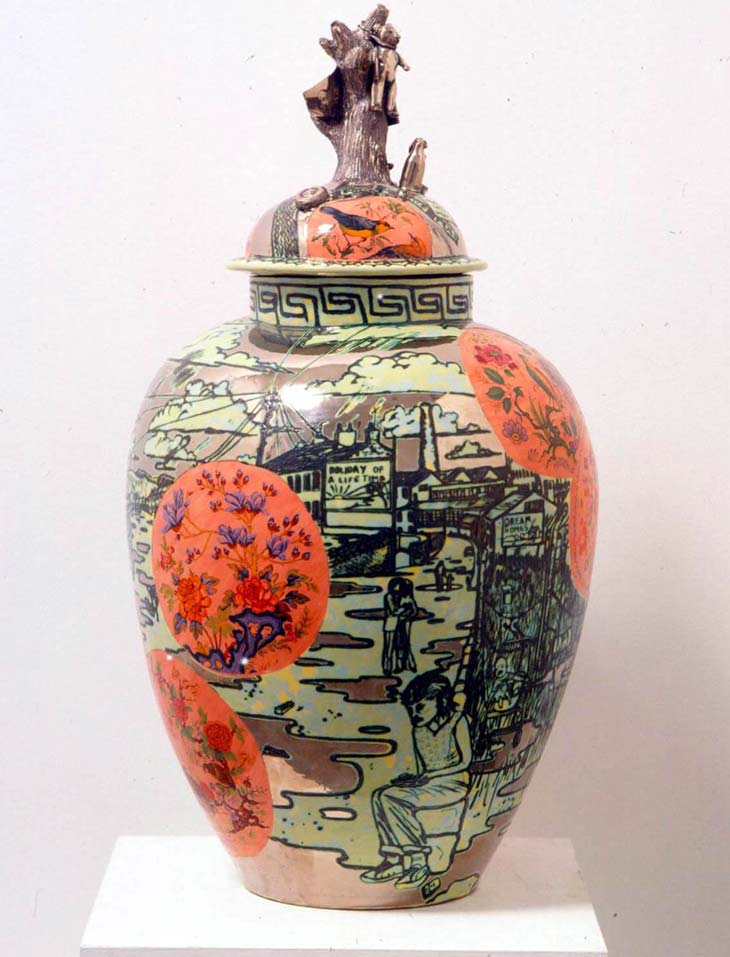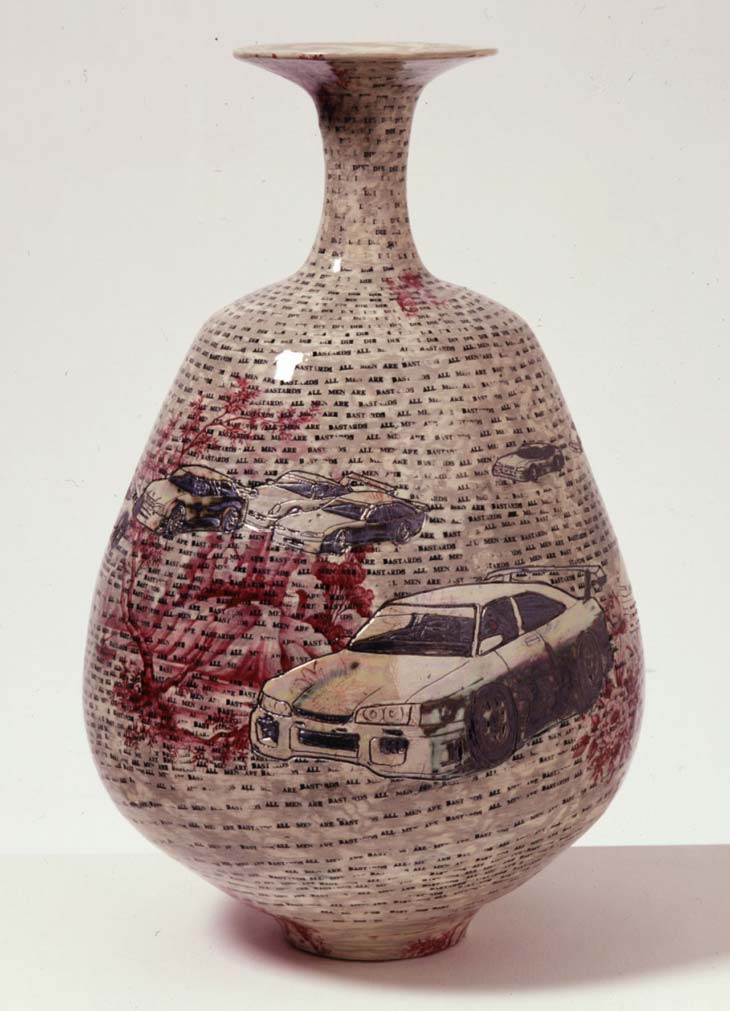Pop ceramics by Grayson Perry
Ceramics is a material composed of relatively simple elements, clay and water, but their composition, once cooked, can yield amazing results.
If we are accustomed to thinking of pottery as a decorative object useful at best for holding lace on our grandmothers’ windowsills, some contemporary artists will surprise us with the way they have been able to reinvent its aesthetics.
One contemporary artist who has certainly been able to experiment with and “rejuvenate” ceramics is Grayson Perry. Born in Chelmsford in 1960, Perry is known for his eccentric and provocative works that often explore themes of gender, identity, and politics.

Grayson Perry, we shall catch it on the beaches, 2020 | Courtesy Nasjonal Museet
Perry began working with ceramics during the 1980s, a time when precisely, this material was considered old-fashioned and unfashionable. But instead of using ceramics to create traditional decorative objects, Perry decided to use the technique to explore social and political themes.
His works range from large vases decorated with images of famous people to symbols of mass culture, always incorporating bright phrases and colors within them, often with a focus on different gender identities.

Grayson Perry
Barbaric Splendour, 2003 – Courtesy Saatchi Gallery
In this regard, Perry reveals, “One of the reasons I dress as a woman is my low self-esteem, to go along with the image of women being seen as a second-class thing… It’s like pottery: that is also seen as second-class.”
The pots bear contemporary images, as we have already mentioned human figures, but also cars as in ” All Men Are Bastards, 2001″ and provocative writings as in We Shall Catch it on the Beaches, where among the various phrases we find “don’t give a shit,” or again, depictions of everyday scenes in the world, as in Barbaric Splendour, 2003.

Grayson Perry, all men are bastards, 2001 – Courtesy Saatchi Gallery
All in all, Grayson Perry is a phenomenal artist who, thanks in part to his international recognition and has received several awards including the prestigious Turner Prize in 2003, has officially brought ceramics to a new stage of expression.

